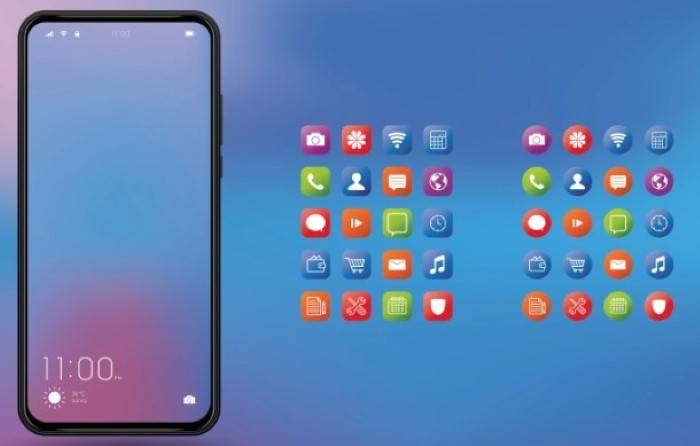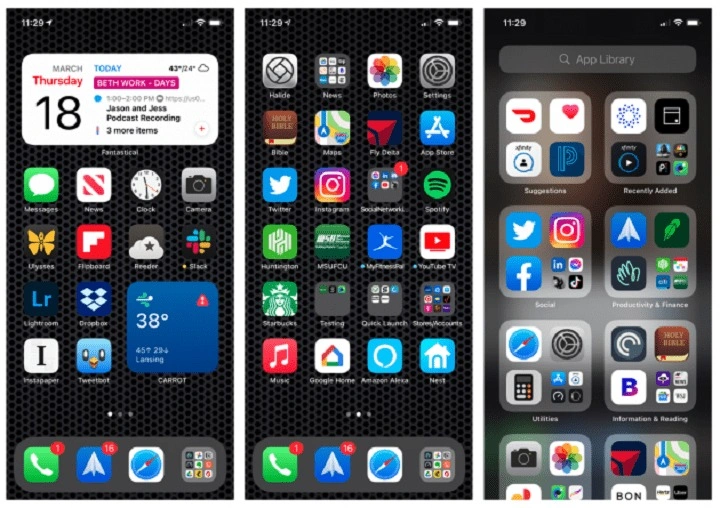In today’s fast-paced digital world, our smartphones serve as indispensable tools for both work and leisure. Among these, the iPhone stands out as a beacon of innovation and functionality. However, with the multitude of apps available, managing them efficiently can become a daunting task. Fear not, for this comprehensive guide will equip you with the knowledge and strategies to organize your iPhone apps effectively, boosting your productivity and enhancing your overall mobile experience.
Understanding iPhone App Organization

Before delving into the specifics of organizing your apps, it’s essential to understand the various methods and principles involved. iPhone app organization revolves around categorization, accessibility, and personal preference. By structuring your apps logically and intuitively, you can streamline your workflow and access the tools you need with ease.
Categorization Strategies
Functional Categories: Group apps based on their primary function or purpose, such as productivity, social media, entertainment, or utilities.
- Productivity: Apps like Calendar, Notes, and Task Managers.
- Social Media: Facebook, Instagram, Twitter, etc.
- Entertainment: Streaming services, games, and multimedia apps.
- Utilities: Weather, Calculator, and Health apps.
Frequency of Use: Arrange apps based on how frequently you access them. Place frequently used apps on your home screen or in easily accessible folders for quick access.
- Daily: Apps used on a daily basis, such as messaging or email apps.
- Weekly: Apps used regularly but not as frequently as daily apps.
- Occasional: Apps used infrequently but are still necessary to keep on your device.
Alphabetical Order: For those who prefer a straightforward approach, organizing apps alphabetically can be an effective method, especially for larger app collections.
Effective App Organization Techniques

Now that you understand the principles behind app organization, let’s explore some practical techniques to implement them on your iPhone.
Utilize Folders: Folders are your best friend when it comes to organizing apps on your iPhone. Create folders based on your chosen categorization strategy and drag relevant apps into them.
- To create a folder, long-press on an app icon until it starts jiggling, then drag it onto another app icon to create a folder.
- Give each folder a descriptive name to easily identify its contents.
Customize Your Home Screen: Your iPhone’s home screen serves as your digital dashboard, so customize it to suit your needs.
- Arrange your most frequently used apps on the home screen for quick access.
- Use widgets to display important information or quick actions directly on your home screen.
Page Management: If you have multiple pages of apps, organize them strategically to avoid clutter.
- Group related apps on the same page or adjacent pages for easy navigation.
- Reserve the first page for essential apps and widgets, keeping subsequent pages for less frequently used apps.
Search Functionality: Leverage the iPhone’s built-in search functionality to find apps quickly.
- Swipe down on the home screen or swipe right from the first home screen to access the search bar.
- Type the name of the app you’re looking for, and iOS will provide suggestions in real-time.
Utilize Siri Suggestions: iOS’s intelligent assistant, Siri, can learn your app usage patterns and offer proactive suggestions.
- Swipe right on the home screen to access the Today View, where Siri Suggestions are displayed.
- Siri may suggest apps based on the time of day, your location, or other contextual factors.
Tips for Maintaining an Organized App Ecosystem
Organizing your iPhone apps is not a one-time task; it requires ongoing maintenance and optimization to ensure peak efficiency. Here are some tips to help you maintain your organized app ecosystem:
Regular App Cleanup: Periodically review your installed apps and delete those you no longer use or need.
- Unused apps take up valuable storage space and clutter your device.
- Be ruthless in decluttering to keep your iPhone lean and efficient.
Update Apps Regularly: Stay on top of app updates to ensure optimal performance and security.
- Enable automatic app updates in Settings to streamline the process.
- Developers often release updates to fix bugs, add features, or improve compatibility with newer iOS versions.
Backup Your iPhone: In the event of data loss or device failure, having a recent backup ensures you can restore your apps and data seamlessly.
- Use iCloud Backup or iTunes/Finder on your computer to create regular backups of your iPhone.
- Regular backups provide peace of mind and protect your valuable data.
Experiment and Adapt: Don’t be afraid to experiment with different organization methods and adapt them to suit your evolving needs.
- Your app usage patterns may change over time, requiring adjustments to your organization strategy.
- Stay flexible and open to change to maintain an efficient app ecosystem.
Organizing apps on your iPhone is not just about tidying up your digital space; it’s about optimizing your workflow, enhancing productivity, and maximizing the utility of your device. By implementing the strategies and techniques outlined in this guide, you can take control of your app ecosystem and unlock the full potential of your iPhone. So, roll up your sleeves, dive into your app collection, and transform your iPhone into a well-oiled productivity machine!


